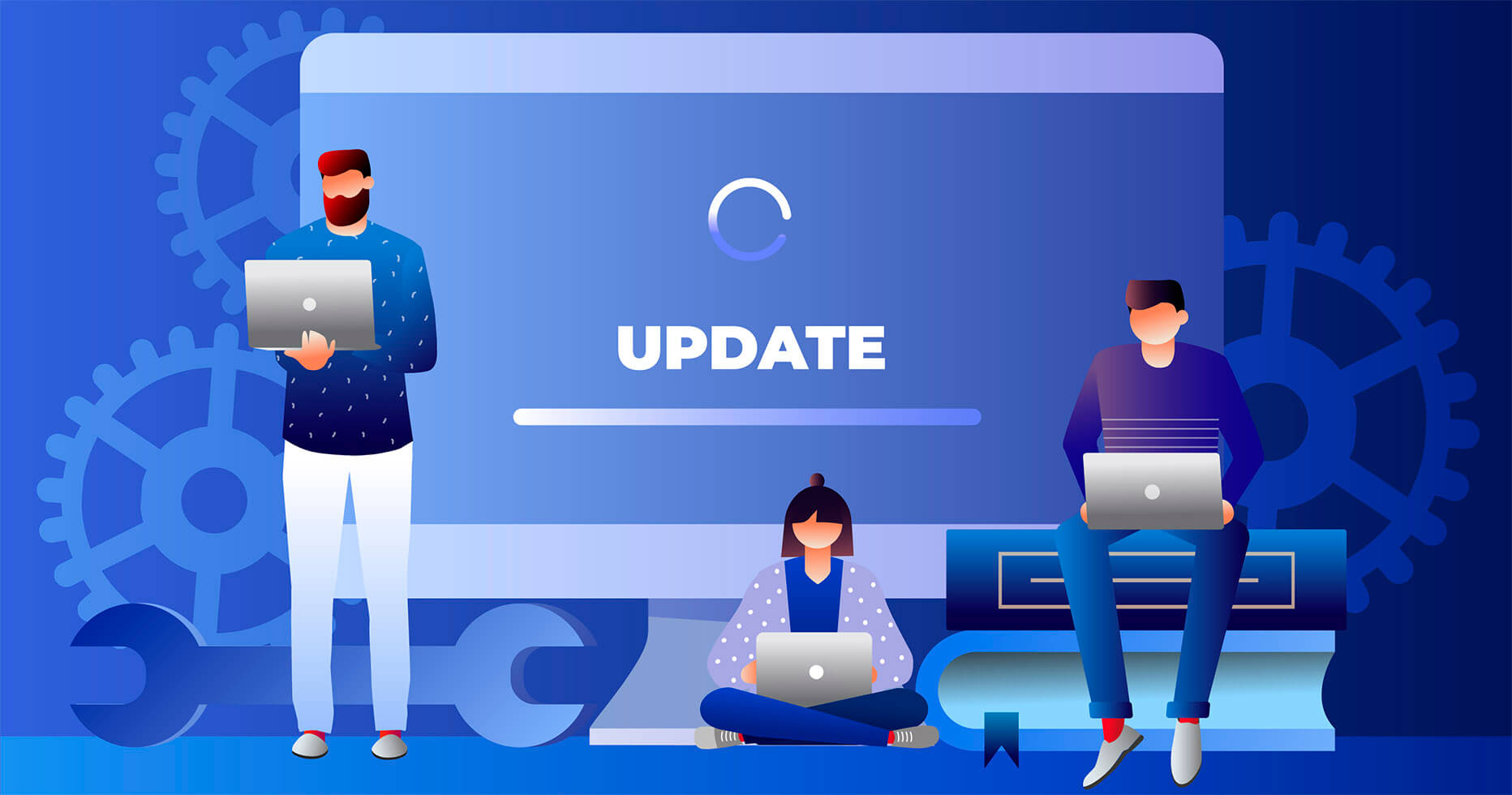What Is the Core Update
Google changes algorithms every day. These are not the assumptions of SEO experts, but a confirmed fact. In an official blog for webmasters, search engine representatives say they make minor changes daily.
Global updates are called Google Core Update and occur three to four times a year. There is no clear schedule for them. These are global changes to search engine ranking algorithms that are performed to provide users with even more relevant content. Google reinforces the importance of one or more factors, monitors changes, and continues to work.
Search engine ranking algorithms are a unique technology that is protected as an expensive commercial product. Google does not disclose the details of the algorithms operation and describes them with a single phrase: “Make content for people—get profit.” Unlike other updates, Google announces the Core Update on Twitter when the deployment is complete.
May Core Update
The new global update is intended, first of all, to obtain more relevant results in SERP for all countries and all languages. This update lets us know that Google does not stop working on improving and changing its algorithms, even during the worldwide coronavirus pandemic.
What Has Changed
Who won this Google core algorithm update may 2020? First, projects that work on the following features:
- E-A-T (expertise, authoritativeness, trustworthiness). It’s a key factor for YMYL sites. Those who neglected these factors rolled back farthest.
- Mobile version site. It includes the adaptation of the mobile version to the users’ needs and its full support at the desktop level (development, new products implementation, A/B testing).
- High-quality content. Even small sites with good content have improved their positions.
- Link profile. There should be no spam by anchors or links of unknown origin.
The above is for the logical and expected improvements. However, there have been changes that surprised webmasters. Google experts have already commented on a number of them. After starting the updates, Google engineers collect feedback from webmasters and see what is broken. As a result, they have to smooth out the negative effects (false positives) because of which the owners of the “good” sites suffered. Many posts on social networks mention local search changes. Local SEO Specialist Darren Shaw notes that the niche has been storming since the end of April. Google experts have already confirmed that it had been a bug.
In addition, it is worth noting the following Google May 2020 Core algorithm updates:
- Partner sites and aggregator sites improved their performance.
- Projects with a strong brand image received a significant boost from Google, while “less branded” ones went down.
- Some projects with a weak link profile also came forward.
Winners and Losers of the Google Algorithm Update
Many at the World Forum of Webmasters have already been outraged by such changes. In their opinion, in less than a week, updates have led to a global decrease in traffic and online sales for many fields: healthcare, technology, finance, and dating.
After the first wave, SEMrush compared the average value of volatility seven days before and two days after the announcement of the update. The most affected categories at that time were: Travel, Real Estate, Health, Pets & Animals, and People & Society. This applies to search both on a computer and on mobile devices.
The five winners included such categories as News, Business & Industrial, Online Communities, Arts & Entertainment, and Health. The injured were Arts & Entertainment, Online Communities, Business & Industrial, Games, and News. The situation is ambiguous because several categories fell into both lists, which means that the matter is not only in the subject of the site itself but also in other factors that influenced the ranking.
Today, when the Google core update may 2020 impact calmed down a bit, the distribution of winners and losers has slightly changed. The News is still confidently holding the first place but sports and auto-related appeared among the main losers.
It’s important to understand that major core updates to the Google algorithm are usually not industry-specific. A change can have a strong impact on the niche, but this does not mean that it was the goal of the update. Traffic drawdown after algorithm changing may have nothing to do with the site itself, but is associated with a reassessment of ranking factors.
How to Adapt to the Changes
Changes have already occurred, so now webmasters can only observe, analyze and adapt to the latest Google algorithm update. Here are some points to pay attention to:
User Signals Matter
Google reports that it focuses on traffic signals determining in which cases the site is important and useful, and how much it meets the user’s expectations. Although it is too early to draw far-reaching conclusions, you can take a closer look at the sites that clearly benefit from Google changes May 2020.
The head of SEO at content marketing agency Suxeedo Niels Dahnke is sure that good user signals (high CTR, low bounce rate, and good dwell-time) have a positive effect on Google’s ranking stability.
Update Your Content
Constant posting and content updating is an important step in improving your position in SERP. It is not enough just to pull out old texts and add a couple of sentences to update them. You should make efforts to keep up with the Google algo update: check relevance, get rid of outdated information, add a few paragraphs, and, if necessary, even rewrite the entire article.
The famous marketer Neil Patel conducted a study based on 641 sites that regularly update their content. Thus, only about 6% of these sites have reduced search traffic by more than 10% since the update. SERP improved by 10% for more than 187 websites.
Make the Content Rich
Another important task for webmasters in the terms of the new update is to review the quantitative part of their content. Sites with thin content, i.e. where at least one page contains texts with a small number of words, went down. Of the 400 resources that Neil Patel tested, 31% were adversely affected: their search results fell by more than 10%.
Checking the site for the thin content is a must-do thing on the SEO checklist 2020, and not only as part of updates from Google, but also for regular work on the site quality. However, do not forget about common sense. See if it is really necessary to increase the number of words and whether you really need this page.
Improve SEO
Errors in the SEO, mainly duplicate headings and meta descriptions, can seriously influence the drop in search results. More than 20% of repetitions can critically affect performance. However, the pursuit of the perfect result is not always the right option. Using the same tags may be justified, for category pages with pagination for example. In other cases, you should fix the errors to match the Google SEO update.
Add Expertise
After the May update, extra points in the search results went to the sites with first-hand expert opinion. The author of the texts should have good knowledge of the field they write about and, if possible, consult with relevant experts. Checklist for expert content:
- It reveals the narrow aspects of the topic.
- Heading H1 and subheadings H2-H6 correspond to the topic.
- There are no spammed and uninformative texts.
- There is a clear structure of articles including bulleted lists, graphics, tables, diagrams, videos, headings, and subheadings.
- There are feedback forms and all the necessary information is visible.
Check With Google Guidelines
Google emphasizes that a drop in SERP does not mean that the site is bad, just someone else has more relevant and high-quality content on the same topic, and that’s why users prefer the competitor’s site. Pay attention to Google’s recommendations for webmasters, especially after core updates. By responding to the changes in time, you will most likely be able to avoid traffic loss. It’s worth starting with two main points:
- Check Google’s Quality Raters Guidelines for each item that may be applicable to your site as signs of high or low quality.
- Refer to the official Google blog. An excellent checklist is presented there to verify that your content meets quality requirements.
How to Keep Up With Google’s Changing Algorithms
Google search algorithm updates are geared to improve the overall search quality. The sites that were previously ranked lower may rank unexpectedly higher, and vice versa. The webmaster’s task is to monitor all changes and improve the content, making it expert, relevant, and interesting. Then, whatever changes are brought about, you will still rank high on Google.





